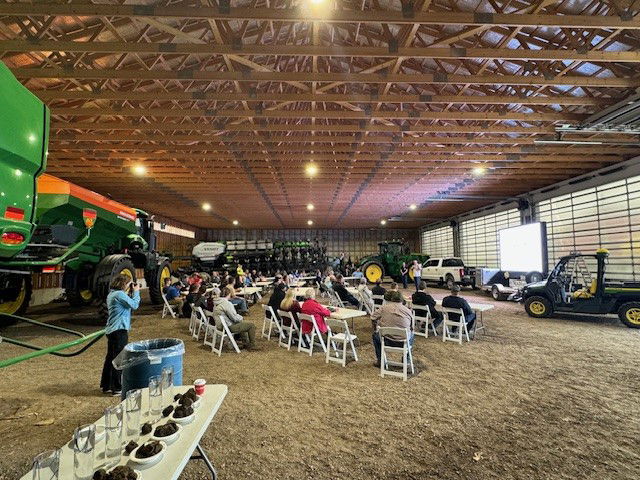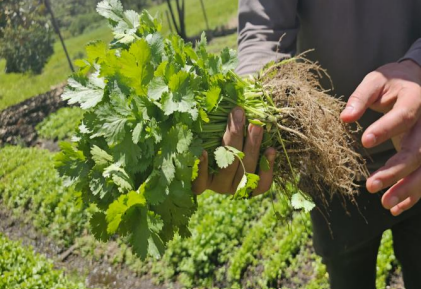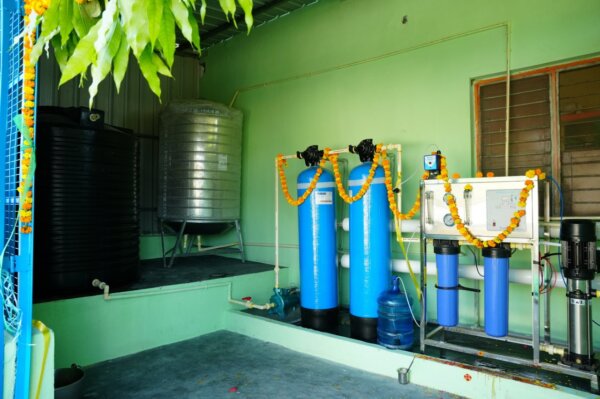
At Griffith Foods, advancing regenerative agriculture is a key part of our sustainability strategy and 2030 Aspirations. By focusing on improving soil health, enhancing biodiversity, and building resilience in farming communities, we aim to create lasting positive impact across our supply chain. Regenerative agriculture ensures we build food system networks that enable the restoration of nature while improving overall farmer livelihoods and food production. Our approach begins with launching pilot programs with crops where we can make a meaningful difference in our supply chain, partnering closely with growers of all farm sizes and local organizations to promote sustainable farming practices that benefit both people and the planet.
In Ontario, we launched a wheat pilot with the Ontario Soil and Crop Improvement Association (OSCIA), Parrish & Heimbecker (P&H), and the Sustainable Food Lab to promote regenerative practices like cover cropping and split nitrogen application. These methods enhance soil health, reduce erosion, and increase farm resilience. Key features of the pilot program included a project design based on local context and providing farmer education, resources and tools, and financial incentives.
We engaged with farmers throughout Year 1 to share insights, discuss feedback, and build trust. For example, during our Field Day in June 2024, 40 local agriculture experts and seasoned farmers came together to discuss the growing season and answer questions. At the conclusion of the event, OSCIA conducted an anonymous survey where we heard from participants about the importance of collaboration and education: “Trying something new on the farm takes time, and there is always a learning curve. It’s great to see different organizations coming together to support farmers in moving the needle.” With the success of the pilot’s programming in Year 1, we aim to scale these practices to an additional 10,000+ acres as we move into Year 2.

Building on the success of our Ontario Field Day, we hosted a similar educational event in the UK during October 2024, bringing together farmers and agroecology experts. The discussion centered on a 70-acre, local farmer-led cover crop pilot designed to identify the best species to precede parsley that enhances biodiversity and water filtration. Another key highlight of the day was a 2-meter-deep soil pit, where the agroecologists were able to visibly point out various rooting structures and soil characteristics.
In Colombia, we promote composting at our Picados processing location, transforming waste — like the end of a lettuce head and paper towels — into biologically rich compost. Like a baker or a chef creating a new recipe, we are experimenting to find the right ratio and testing it on a demo plot with cilantro. As farmers deliver their produce for processing at our facility, they can take home bags of compost to apply to their next crop. Compost is commonly known for adding macronutrients such as nitrogen, potassium, and phosphorus to the soil, which are critical for plant growth. However, compost has more benefits like adding micronutrients, supporting soil microbiology, and improving soil structure and aeration, which leads to healthier land.
Our regenerative agriculture pilots lay the groundwork for scaling these efforts globally. By fostering partnerships, providing education, and supporting farmers with tools and financial resources, we’re building a more sustainable and resilient food system. These programs showcase our adaptability and long-term commitment to environmental impact and economic enablement. Together with farmers, we’re working toward our 2030 Aspirations — creating lasting change across more regions and crops for a regenerative future.



